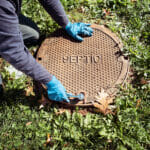Have you ever seen a reef aquarium in a pet shop, at a friend’s home, or over the internet that looks so stunning, you can’t help but wonder what the secret is for setting up such an amazing tank?
If you’re planning to set up your very first reef aquarium or have already tried in the past, but failed in one way or another, this article is for you! Through this guide, we’ll share with you the secret sauce for setting up an incredible reef aquarium that will blow anyone away.
1. Failing to plan is planning to fail.
The very first step in setting up your reef aquarium is planning what you want to put in your aquarium and where to place it.
Would you like to have a good mix of fishes, invertebrates, live rocks, and corals? What kind of corals are you planning on putting into the tank? Are they soft corals like SPS coral or are they hard coral? Deciding on this will guide you when buying equipment for your reef aquarium. This is because the care requirements of different creatures may vary.
Next, plan on where you want to place your tank. Trust me, moving your tank is not something you’d like to do often. The process is complex and there are a lot of things that you need to set up.
When choosing a spot in your home, make sure it’s somewhere away from windows or doors where it may be subjected to direct sunlight and cold draft may enter. Also, make sure there’s plenty of room for you to work on.
2. Get all the right gear.
You can either buy all-in-one reef aquariums or build your own. If you choose the latter, below is a list of the essential pieces of equipment you need to get started.
- Aquarium tank
- Aquarium stand (not necessary if you have a desktop aquarium)
- Pumps
- Filtration
- Light
- Heater
- Saltwater
- Live Rock
- Sump
- Bucket or Plastic Container
- Rubber Hose or Tubing
Whichever route you choose to take, it’s important to never ever compromise on quality as you’ll just end up replacing them with better ones. So go for the more expensive, but quality products.
3. Bigger is better.
When trying out something for the first time, you always hear the advice “start small”–but not in this hobby. When setting up a reef aquarium, bigger is better.
It’s easier to achieve success with larger tanks as they can hold more volume and are more stable. In fact, nano or pico reef aquariums are recommended for more experienced aquarists.
Aside from the size of the tank, bigger is also better for other equipment such as the sump for more flexible space, protein skimmer for more bio-load capacity, and RODI unit to get fresh water faster.
4. Water parameters are a big deal.
There are two ways you can get saltwater for your reef aquarium– buy from a fish store or make your own. Making your own saltwater involves mixing reverse osmosis de-ionized water (RODI) and aquarium salt.
Your main focus is on keeping your saltwater clean and of high quality, otherwise, everything breaks down. You have to ensure that there’s a balance in water chemistry by testing at least once a week.
There are affordable aquarium test kits out there to ensure that the water is within these parameters:
- Alkalinity: 8-12 dKH
- Calcium: 350-450 ppm
- Salinity: 35ppt or 1.0264 specific gravity
- Phosphate: <0.2ppm
- Magnesium: 1250-1350 ppm
- Temperature: 75 – 80°F (23.5 – 26.5°C)
5. A weekly water change routine is the key.
One of the ways to keep your reef aquarium at its absolute best is by changing its water on a weekly basis. Although dilution may also work, it is replenishing your tank with new life-sustaining water which is the key for a successful saltwater aquarium.
6. Ensure proper lighting and optimum flow.
Because corals are photosynthetic animals, light is necessary for them to survive. Make sure that you buy lighting equipment specifically built for this purpose, as some LEDs are too intense that they can raise the temperature in your tank and ‘cook’ your corals.
When you first set up your aquarium, the light should be switched on for 6 to 8 hours a day. After you cycled your reef tank for at least six weeks, gradually increase the lighting period. Keep in mind that when algae starts to bloom, you have to reduce the intensity of the lighting or the duration of daylight time.
Also, different types of corals require varying amounts of light to grow. The depth of the water and shadows created by your rockscapes can help you produce different light intensity zones.
Obviously, light intensity is weaker when under the shadows of rocks and at the edges of the aquarium. However, just to be sure, use a PAR meter to test the light intensity.
Asid from light, water flow is also important to facilitate gas exchange and keep your tank healthy. Powerheads create flow and you can have more than one if you have a large aquarium.
7. Check the compatibility before adding inhabitants.
After your aquarium has been cycled properly for at least six weeks, you can now add corals, fishes, and invertebrates. Keep in mind that not all are compatible with each other, so clarify with the seller before buying. For instance, while some fish species like tetras and guppies are relatively peaceful and can coexist with other fish, others, such as the sailfin pleco, can be territorial and may clash with other bottom-dwelling species.
Also, it’s important to quarantine your fish before adding it into your tank. Not doing this is like playing Russian roulette.
All it takes is one bad fish with marine velvet or some other disease to infect your whole reef aquarium. Seeing your entire tank being wiped out can be devastating, not to mention costly.
And oh, you also have to wait several weeks or even months for the disease to pass after your tank has been wiped out.
8. Make your reef aquarium look awesome through aquascaping.
The tanks you see on forums that just look perfect are carefully planned and masterfully aquascaped.
So if you want to achieve this picture perfect reef aquarium, know that it’s not as simple as getting a bunch of rocks and corals and arranging them into the tank. Dry rocks are drilled, chiseled, cut, and epoxied, and then laid out on cardboard to visualize and refine the aquascape.
It’s more of an artwork, really.
Final Thoughts
Putting together a reef aquarium can be a lot of work. With all the equipment and items you need to buy, this project can also be costly. If you’re looking for affordable high-quality corals, visit Pieces of the Ocean. Nevertheless, successfully setting up a reef aquarium and seeing the product of your patience and hard work is extremely rewarding.
As the old adage goes, “Rome wasn’t built in a day”. So be patient and don’t expect great things to happen to your reef tank overnight. Behind every amazing aquarium are hours spent on research, tweaking, and care.
So hang in there and trust the process!
Image Source: BigStockPhoto.com (Licensed)
Related Categories: Pets & Animals, Reviews








